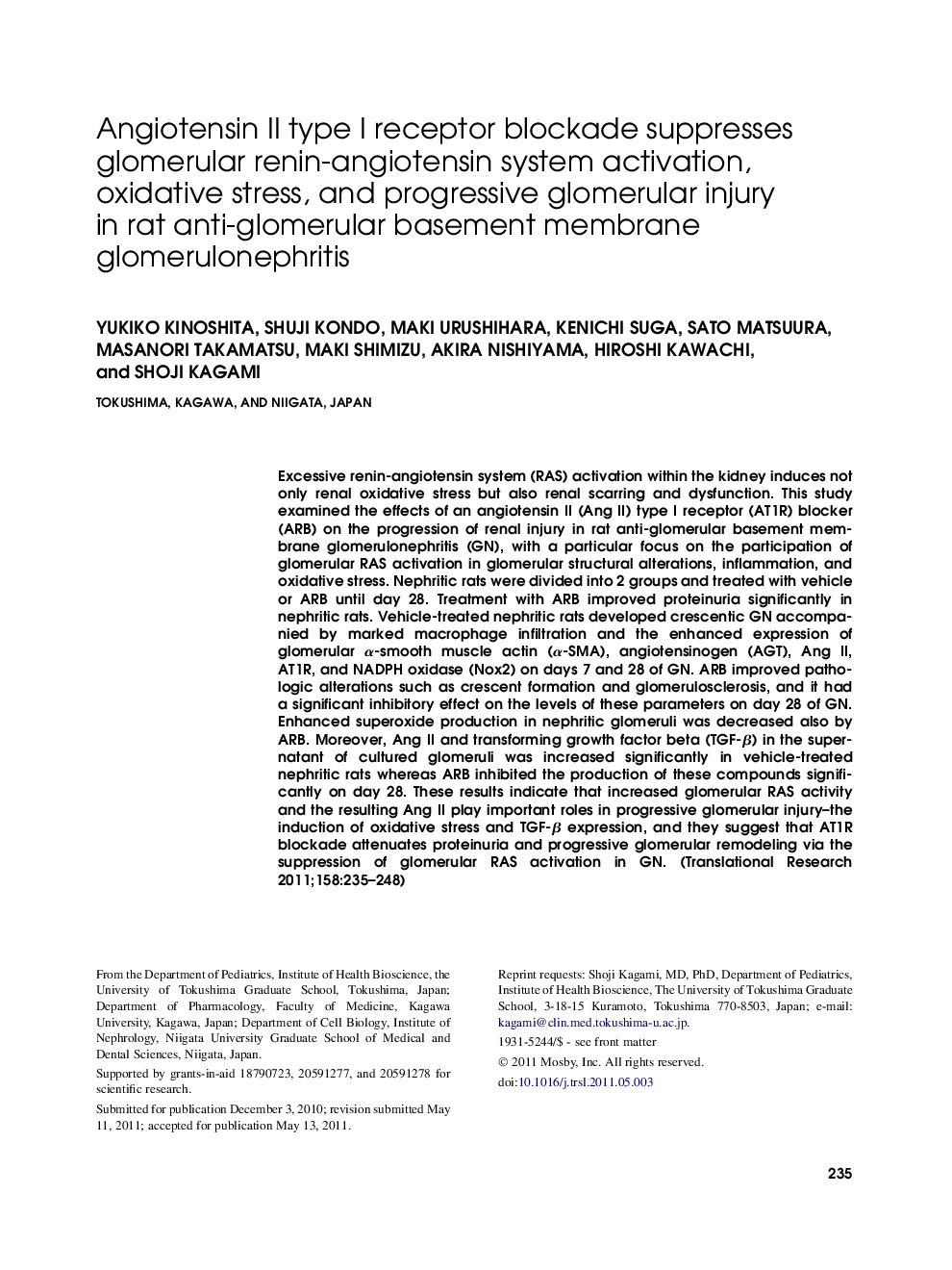| کد مقاله | کد نشریه | سال انتشار | مقاله انگلیسی | نسخه تمام متن |
|---|---|---|---|---|
| 3840584 | 1247924 | 2011 | 14 صفحه PDF | دانلود رایگان |

Excessive renin-angiotensin system (RAS) activation within the kidney induces not only renal oxidative stress but also renal scarring and dysfunction. This study examined the effects of an angiotensin II (Ang II) type I receptor (AT1R) blocker (ARB) on the progression of renal injury in rat anti-glomerular basement membrane glomerulonephritis (GN), with a particular focus on the participation of glomerular RAS activation in glomerular structural alterations, inflammation, and oxidative stress. Nephritic rats were divided into 2 groups and treated with vehicle or ARB until day 28. Treatment with ARB improved proteinuria significantly in nephritic rats. Vehicle-treated nephritic rats developed crescentic GN accompanied by marked macrophage infiltration and the enhanced expression of glomerular α-smooth muscle actin (α-SMA), angiotensinogen (AGT), Ang II, AT1R, and NADPH oxidase (Nox2) on days 7 and 28 of GN. ARB improved pathologic alterations such as crescent formation and glomerulosclerosis, and it had a significant inhibitory effect on the levels of these parameters on day 28 of GN. Enhanced superoxide production in nephritic glomeruli was decreased also by ARB. Moreover, Ang II and transforming growth factor beta (TGF-β) in the supernatant of cultured glomeruli was increased significantly in vehicle-treated nephritic rats whereas ARB inhibited the production of these compounds significantly on day 28. These results indicate that increased glomerular RAS activity and the resulting Ang II play important roles in progressive glomerular injury–the induction of oxidative stress and TGF-β expression, and they suggest that AT1R blockade attenuates proteinuria and progressive glomerular remodeling via the suppression of glomerular RAS activation in GN.
Journal: Translational Research - Volume 158, Issue 4, October 2011, Pages 235–248